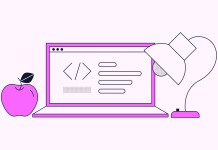
If you’re interested in a career in tech, you probably already know that data jobs are hot right now. Tech runs on data, and data science can be applied to virtually every industry. Chances are, if you think of a field you’re interested in, there are jobs that require data skills. And if that isn’t enough, the pay is generally pretty good too.
Plus, it’s rewarding. Data Scientists blend art and science as they use their technical skills to unearth insights hidden in troves of data, and then tell the bigger story behind the numbers. “It’s empowering to take a bunch of observations — a data set — and discover the patterns in there and turn it into something actionable,” says Michelle McSweeney, Codecademy Data Science Domain Manager.
Excited to learn more? Then it’s time to dig into some data, and we’ll show you how in our new free course: Getting Started with Python for Data Science.
Who is the new course right for?
This course gives you a peek into the life of a Data Scientist. You’ll learn the basics of Python, one of the most popular languages for data science. Then, we’ll show you how to use Python for data analysis and visualization before going over the tools and techniques you’ll need to perform the type of tasks you’ll face on the job.
If you’re considering a career as a Data Scientist, this course is a great first step — but Codecademy Curriculum Developer Ada Morse explains that it can really be helpful for anyone in tech. Most jobs involve working with data in some capacity, and knowing your way around a data set is a valuable skill in any role. “I know a lot of people who aren’t Data Scientists but are the ‘data person’ or the ‘Python person’ on their team, and it can be really helpful,” Ada says.
What will you learn in the new course?
We’ll show you how to use Python and the pandas library to process and analyze data; and by the end of the course, you’ll be able to take raw data and turn it into a format that can answer a real-world data question.
The exercises throughout the course are similar to situations you’d encounter in the professional world, and you’ll learn the practical applications of your new skills along with their conceptual foundations. “The datasets are real; they’re not artificially designed to be nice and neat,” Ada says. “You’re working with data on questions that Data Scientists actually ask, and you’re doing it in Jupyter Notebook, which is where you’d be working if you got a job doing this kind of data analytics.”
Jupyter Notebook is an interactive workspace for developing data science code and visualization. It’s one of the most popular tools in the industry; you’ll find it in almost every Data Scientist’s repertoire. And while we cover Python and pandas in the course, after taking it, you’ll be comfortable enough to use Jupyter Notebook with any other data science language you learn.
Ready to get your hands into some data? Check out our new free course Getting Started with Python for Data Science!









